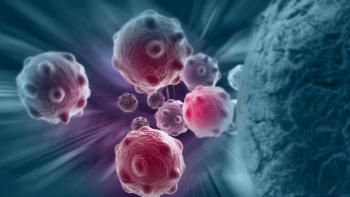
Survival Improvement With Transplant for Light-Chain Amyloidosis Patients
More patients with light-chain amyloidosis are surviving longer after autologous hematopoietic cell transplantation, with a reduction in early post-transplant mortality.
More patients with light-chain amyloidosis (AL) are surviving longer after autologous hematopoietic cell transplantation, according to the results of a retrospective study
The mortality at 30 days decreased from 11% between 1995 and 2000 to 5% between 2001 and 2006, and to 3% between 2007 and 2012. Similarly, the mortality at 100 days decreased from 20% between 1995 and 2000 to 11% between 2001 and 2006, and to 5% between 2007 and 2012.
The 5-year overall survival rate increased from 55% to 61% to 77% during the 3 time periods, respectively.
Anita D’Souza, MD, assistant professor of medicine in the division of hematology and oncology at the Medical College of Wisconsin in Milwaukee, and colleagues used the Center for International Blood and Marrow Transplant Research database to identify 1,536 patients with AL who underwent an autotransplant at 134 North American centers and analyzed their outcomes.
“Impressive reduction in early mortality has been achieved in recent years, and this is superior to the reported transplantation-related mortality of 24% from the only randomized clinical trial we know of in this setting,” wrote the study authors.
The majority of patients had their transplant within 6 months of diagnosis. AL is caused by malfunctioning plasma cell clones that produce abnormal, misfolded immunoglobulin light chains deposited in different organs. These deposits of insoluble fibrils cause organ failure and death, particularly when the insoluble fibrils are deposited in the blood vessels and heart. Multiple myeloma is linked to AL and can result in this disorder.
The median patient follow-up in the study was 56 months and ranged from 5 to 209 months. The median age of patients was 56 years. Early mortality was associated with centers that did not perform autotransplants regularly. The centers that performed more than four AL transplants every year had the best comparative outcomes.
Patient factors associated with worse outcomes were cardiac involvement, poor renal function, poor Karnofsky performance score (< 80), and the use of melphalan conditioning < 180 mg/m2.
The authors proposed a multi-institutional study to compare the benefit of transplantation with that of plasma cell–directed therapies, such as bortezomib, and other non-transplant treatments to understand the most beneficial approaches. In an accompanying
Newsletter
Stay up to date on recent advances in the multidisciplinary approach to cancer.

















































































